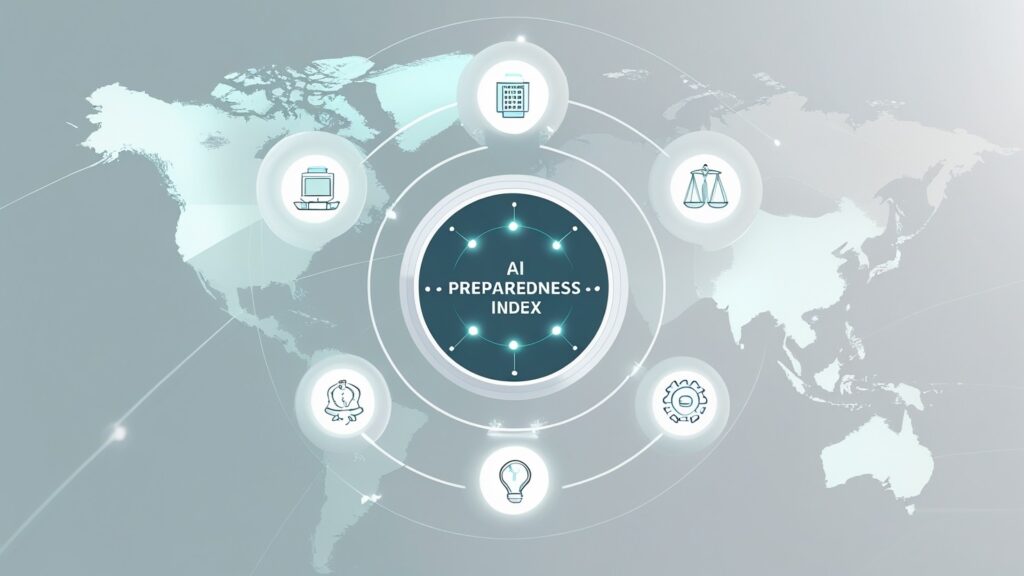Optimizing Space Mission Planning: Traditional Methods vs AI-Augmented Approaches
AI isn’t the silver bullet for space mission planning — its true value emerges only when paired with human intuition, strategic collaboration, and adaptive resilience. Optimizing Space Mission Planning: Traditional Methods vs AI-Augmented Approaches Data Source: Kaggle Tools Used: Python, Power BI Power BI Dashboard: View my end-to-end analytical process: May 9, 2025 By Sagarika Chikhale This project focuses on analyzing the effectiveness of AI-augmented mission planning methods across various space agencies and mission complexities. The analysis compares traditional and AI-augmented planning methods in terms of mission planning time, knowledge transfer efficiency, and contingency coverage. Key areas explored include the evolution of AI-enhanced planning metrics, the differences in AI adoption between NASA, ESA, and JAXA, and the varying impact of AI across mission scenarios. By identifying strengths and areas for improvement, this project aims to provide actionable insights to optimize the integration of AI for future space missions, ensuring more efficient, resilient, and adaptive planning strategies. How Effectively Does AI-Augmented Planning Enhance Mission Planning Time, Knowledge Transfer Efficiency, and Contingency Coverage Across Different Complexity Levels, Mission Sequences, and Mission Phases? This analysis demonstrates how AI-augmented planning improves mission speed, knowledge continuity, and contingency preparation. It highlights where AI adds maximum value across mission complexities and phases, enabling space agencies to better manage risks, optimize operations, and enhance the reliability of critical missions. The following table presents a high-level summary comparison of planning time between Traditional and AI-Augmented methods, grouped by complexity levels (Low, Medium, High, Critical). From the analysis, it is evident that AI significantly reduces mission planning time across all complexities, with the percentage improvement increasing as mission complexity rises. This trend indicates that AI-Augmented method becomes more beneficial as missions grow in complexity, suggesting that for highly critical missions such as Mars expeditions or Deep Space explorations, AI-driven planning can notably accelerate mission readiness, reduce operational delays, and minimize cost overruns. The high-level summary comparison of knowledge transfer efficiency between Traditional and AI-Augmented methods, grouped by mission sequences (1 to 5) shown in table. The analysis highlights that AI consistently improves knowledge transfer efficiency across all mission sequences. This indicates that AI tools help preserve, retain, and transfer critical operational knowledge more effectively over time, which is particularly crucial in extended mission campaigns like multi-stage Mars colonization efforts, where continuity of expertise and learnings across missions is essential for sustained success. Moreover, the following analysis provides a high-level summary comparison of contingency coverage between Traditional and AI-Augmented methods, grouped by mission phases (Launch, Transit, Orbital, Surface, Return). From the analysis, it is observed that while the improvement is moderate in early mission phases (11% in Launch, 17% in Transit), it becomes significantly higher in later phases (29.40% in Surface and 29.02% in Return). This finding suggests that AI-augmented planning method can be advantages in later, more unpredictable stages of the mission, where the risk environment is more dynamic and complex. Thus, focusing AI integration during mid-to-late mission phases can drastically enhance mission safety and robustness. Through this detailed analysis, it becomes clear that AI-Augmented Planning methods substantially improve mission planning quality across critical dimensions such as speeding up complex decision-making, enhancing knowledge continuity, and strengthening mission resilience during risky phases. By leveraging AI, space agencies can make mission planning faster, safer, and more reliable, ultimately paving the way for more ambitious and sustainable space exploration endeavors. How Do NASA, ESA, and JAXA Differ in the Effectiveness of AI-Augmented Mission Planning Under Similar Mission Conditions (Medium Complexity and Mars Missions)? This analysis reveals how NASA, ESA, and JAXA vary in AI-augmented mission planning effectiveness under similar conditions. By comparing their strengths and improvements, it highlights how organizational readiness, technological maturity, and operational focus influence AI’s impact, guiding agencies on optimizing AI integration for mission success. To understand the differences in AI-augmented planning effectiveness among NASA, ESA, and JAXA, a focused comparison was conducted. This analysis was carefully limited to missions with Medium Complexity and Mars as the mission type, ensuring a fair basis for comparison across the three agencies. The controlled conditions helped eliminate variability arising from differences in mission type or complexity, offering a more accurate picture of each agency’s planning practices and their response to AI integration. Initial examination of mission interests showed distinct agency priorities, with ESA favoring Lunar missions, JAXA showing a greater focus on Mars, and NASA concentrating on Deep Space and Earth Orbit missions. Complexity analysis further revealed that NASA and ESA engaged more frequently in low and medium complexity missions, whereas JAXA’s missions leaned towards higher and critical complexity. This backdrop provided important context for interpreting the agencies’ performance under AI-augmented methods. Agencies Mission Interest Agencies Mission Complexity Count A comparative evaluation based on Medium Complexity Mars Missions highlighted that under traditional methods, JAXA led across several key planning areas including planning time, resource efficiency, knowledge transfer, adaptability, and quality assessment, although it lagged slightly in contingency coverage compared to NASA. However, with the implementation of AI-augmented planning, all three agencies demonstrated significant improvements across planning metrics. Notably, ESA exhibited the highest percentage improvement relative to its traditional baseline, followed by NASA and then JAXA. Despite a time gap between missions (ESA and NASA missions in 2018 vs. JAXA’s mission in 2023), the similarity in improvement percentages suggests that ESA and NASA had already integrated highly capable AI systems years earlier, raising intriguing considerations about the technological maturity across agencies. Traditional Comparison Method Across Agencies Performance Percentage Increase Using AI-Augmented Method Further, a detailed phase-wise comparison was performed, breaking down planning performance across the five key mission phases: Launch, Transit, Orbit, Surface, and Return. Analysis of planning time revealed that NASA traditionally managed lower planning times compared to JAXA and ESA across most phases. Even after AI augmentation, NASA maintained a slight advantage in planning time efficiency, although all agencies showed noticeable improvements and the gap among them narrowed. Similarly, evaluation of contingency coverage across mission phases showed that NASA historically maintained stronger contingency plans compared to the others. Post AI-augmentation,
Optimizing Space Mission Planning: Traditional Methods vs AI-Augmented Approaches Read More »





